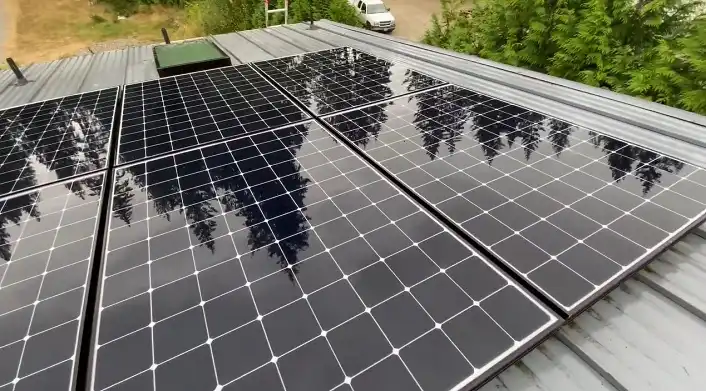Can Fluorescent Light Charge Solar Cells? Is It Possible?
In today’s world, solar power is an increasingly important source of renewable energy. Solar cells, also known as photovoltaic cells, are able to convert sunlight directly into electricity. This is done through the photovoltaic effect – photons from sunlight knock electrons loose in the solar cell’s semiconductor material, creating an electric current. Solar panels are made up of many individual solar cells wired together to produce usable levels of electricity.
This raises the question, can it be charged with an artificial light source light fluorescent light? The answer is surprisingly yes, however, it’s not a very effective way to do it.
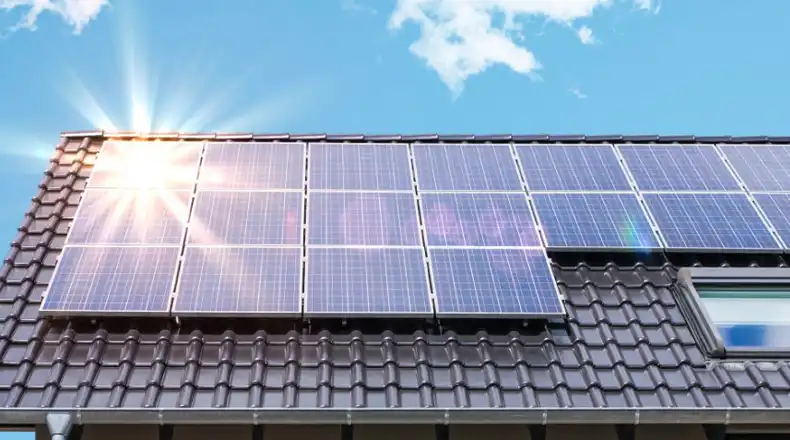
How do Solar Cells and Fluorescent Lights Work?
Solar cells are typically made of silicon semiconductors, often with trace amounts of other elements like phosphorus or boron added to enhance their electrical properties. When sunlight hits the solar cell, energy is transferred to the semiconductor atoms, freeing electrons so they can move between the cell’s layers to generate current. The photovoltaic effect makes renewable solar energy possible.
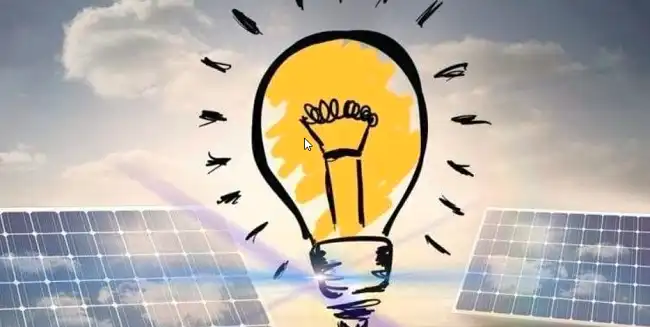
Fluorescent lights also rely on interesting physics to produce visible light. Within the bulb, an electric current excites mercury vapor, which then emits ultraviolet light. This UV light is invisible but causes a phosphor coating on the inside of the tube to glow, creating useful visible light.
Can You Use Fluorescent Lights to Charge Solar Cells?
While fluorescent lights do produce some wavelengths that solar cells can utilize, they are extremely inefficient energy sources for charging solar cells when compared to direct sunlight. However, new research is being done on novel solar cell designs that may be able to utilize indoor fluorescent lighting more effectively in the future.
How Fluorescent Lights Can Charge Solar Cells
Solar cells are designed to absorb photons within a specific range of wavelengths, including visible light, infrared, and some of the UV spectrum. When these photons strike the semiconducting material, they excite electrons which can then move through the layers in the cell to generate electrical current. So solar cells can utilize any light source that emits wavelengths they are able to absorb.
Fluorescent bulbs give off a small amount of UV radiation along with visible light. Testing has shown that some solar cells can in fact generate a tiny electrical current when exposed to the light from fluorescent tubes. However, the efficiency of this process is extremely low – generally only about 1-2% conversion of the light to electricity. This is far below the 15-20% efficiency solar cells achieve in direct sunlight.
What Affects The Efficiency of Fluorescent Lights for Solar Charging
There are a few factors that impact the efficiency of fluorescent charging:
- Color temperature of the bulb – Bulbs rated at 5000K or higher work best, as they give off more usable light.
- Distance from the light source – The solar cells need to be positioned very close to the fluorescent tubes to receive enough intensity.
- Angle of exposure – Direct overhead lighting is optimal for fluorescent charging. Angled exposure further reduces intensity.
- Cell material – Standard crystalline silicon solar cells seem to work best for fluorescent charging. Other semiconductors are less efficient.
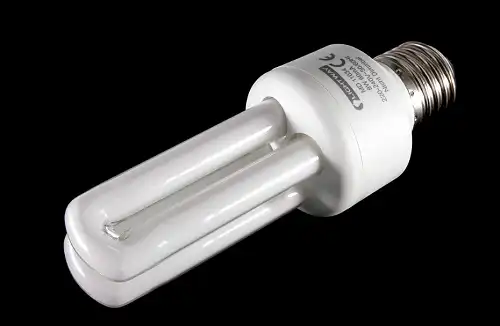
So while fluorescent bulbs can technically charge solar cells, the process is not very effective given the technology we have today. However, researchers are developing new types of solar cells that may improve efficiency with indoor lighting.
Limitations and Challenges of Fluorescent Charging
There are a number of reasons fluorescent lights perform poorly when charging solar cells:
- Most fluorescent bulbs are designed to filter out UV rays, since they are harmful to humans. This filtering significantly reduces the amount of usable light wavelengths emitted. Developing phosphors that give off more UV could improve performance.
- The energy density of fluorescent light is extremely low compared to direct sunlight. Even with close proximity, there simply aren’t enough photons striking the solar cells to generate meaningful energy.
- Solar cells function best with continuous exposure, while indoor lights cycle on and off. This intermittent charging reduces efficiency.
- The electricity used to power the fluorescent bulbs usually far exceeds the tiny amount of energy actually collected by the solar cells. There are major conversion losses in this process.
- Sunlight has very consistent spectral intensity across a wide range of wavelengths, while fluorescent lights fluctuate in spectral intensity. This makes sunlight more reliable for solar charging.
- Components of the fluorescent lights like glass bulbs and ballasts absorb and scatter some of the light, reducing usable radiation on the solar cells.
No artificial light source today can match the performance of direct sunlight across the board. The intensity, spectrum, and reliability of sunshine make it vastly superior for harnessing solar energy.
Recent Advances in Solar Cell Technology
While fluorescent lighting is currently very poor for charging solar cells, researchers are making advances to improve solar conversion of artificial light. One promising technology is dye-sensitized solar cells (DSSC).
DSSCs use photosensitive dye molecules to more efficiently collect photons and generate energy even under low light conditions. While early DSSC designs date back to the 1990s, new chemical engineering has dramatically improved their performance.
Scientists have created DSSCs that can harvest energy from indoor fluorescent lighting with over 25% efficiency – a 10x improvement over today’s commercial silicon solar cells under the same conditions. The dyes allow the cells to absorb more photons within the limited fluorescent spectrum.
What About Other Artificial Light Sources
Fluorescent lights are not the only artificial lights that can generate electricity from solar cells. Other common light sources also contain wavelengths that solar cells can utilize:
- LED Lights – LEDs emit light in a narrow band, which reduces usable wavelengths for solar cells. But they are energy-efficient and durable.
- Incandescent Bulbs – These older bulbs are inefficient, but produce a broad spectrum that can charge cells. The light intensity is low.
- Halogen Lights – Halogens emit bright, full-spectrum light. Good intensity helps charging, but they use lots of energy.
- Candles/Fire – Direct firelight contains infrared wavelengths that solar cells can weakly utilize. However, the spectrum is far too limited for efficient conversion.
- Reflected Light – Indirect light bouncing off walls, floors, etc can charge cells with reduced efficiency. But some energy is still harvested.
While these other lights contain usable wavelengths, they all share the same core limitations: low intensity, intermittent exposure, narrow spectra, and conversion losses. These factors restrict their viability as solar charging sources. No artificial light can rival the intensity and spectrum of direct sunlight.
Final Thoughts
In summary, while fluorescent lights technically produce some wavelengths that can generate electricity in solar cells, they are extremely inefficient as an artificial charging source given today’s technology. Direct sunlight provides solar cells with far greater intensity, energy density, and reliability – key factors that produce dramatically more usable solar power. However, with ongoing advances in materials science and nanoscale engineering, novel solar cell designs are emerging that can make better use of indoor ambient and fluorescent lighting for energy generation.


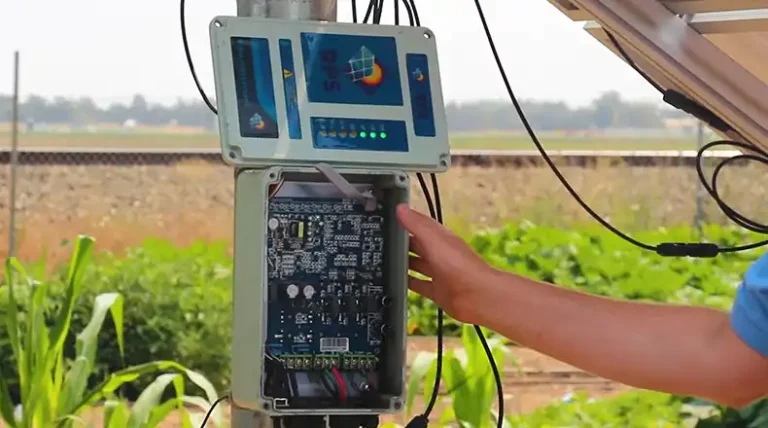
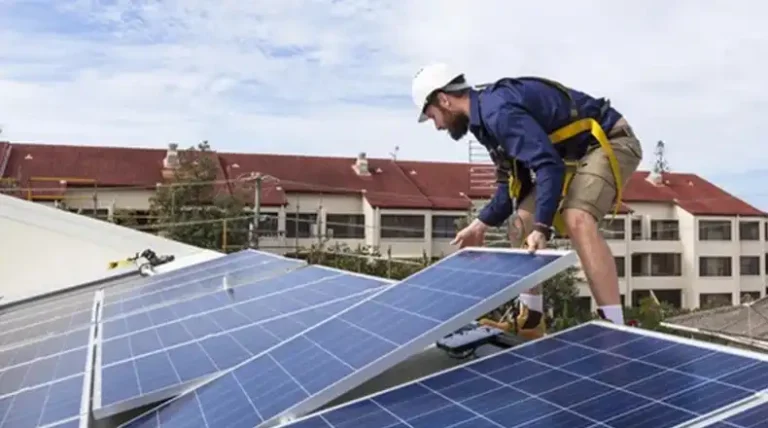

![[Explained] What Can I Do With A 1.5 Watt Solar Panel?](https://www.itekenergy.com/wp-content/uploads/2023/08/what-can-I-do-with-a-1-5-watt-solar-panel-768x428.webp)
